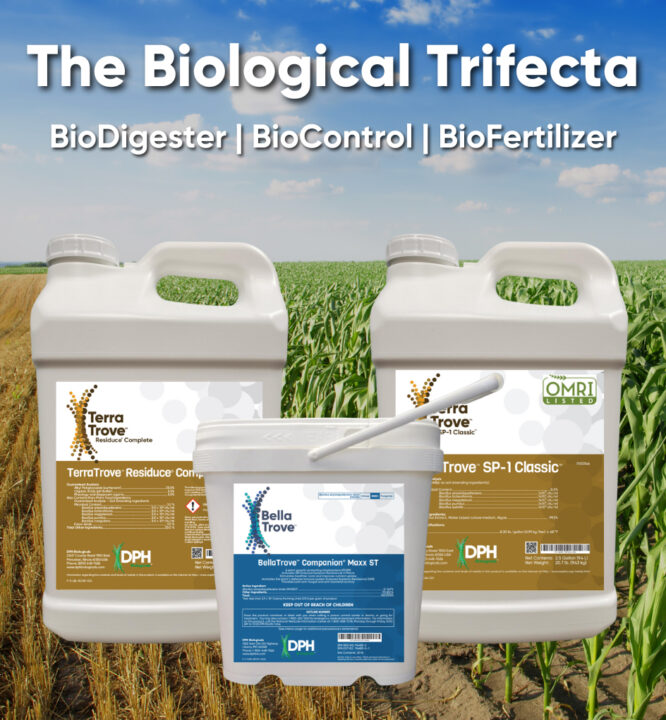Drought Conditions Make Uniform Herbicide Application Essential for Growers
It is not a new concept that growers need to achieve uniform spray coverage throughout their fields to combat weeds effectively. Even if growers use a quality herbicide in the exact amount recommended per the label, they still may not get optimal control. So much depends on a myriad of factors such as weather conditions, product application, weed pressure, timing of application, etc. Ultimately, eliminating or controlling weeds is fundamental to harvesting a quality crop with the highest yield potential. Therefore careful attention should be given to the application process of herbicides.
Take chickpeas as an example. In 2020, the average rainfall for Pullman, WA, was 5.72 inches from May to July, with maximum temperature in June of 84oF. In unirrigated acres, the application of a pre-emergence herbicide that required water to activate, and a post herbicide applied in June, was successful. A year later, the average rainfall in the same location, over those three months was 1.27 inches, with maximum temperatures hitting 105oF in June, and the same application on the same unirrigated acres proved to be unsuccessful. If anything, this illustrates the importance of understanding the impact of significant weather changes, such as temperature and rainfall, as well as the corresponding needs of the land and the crop, itself.
The Drought Variable
In drought conditions, there might be fewer weeds, but the ones that survive are tougher to control, making them harder to kill. Research shows that weeds like field bindweed (a deeply rooted perennial), prostrate knotweed, and puncturevine are more challenging to control under drought conditions versus other species. The same research highlights that post-emergence herbicides tend to be most effective on healthy, actively growing plants as photosynthesis, production of amino acids, and other biosynthetic processes move the herbicide through quickly, resulting in weed death. On the other hand, when a weed is in preservation mode and growing very slowly, it is harder for post-products to penetrate the leaf and plants are better able to fully metabolize.
Growers understand that dry conditions can significantly impact the spray droplet performance itself. In hot conditions, droplet evaporation dramatically increases between the time the droplets leave the spray nozzle and when they are absorbed by the leaf surface. Critically, the droplets can dry very quickly once they are on the leaf surface, which means there is insufficient moisture to facilitate the transfer of the herbicide. The answer? Including the right adjuvant such as Crop oil concentrates (COC) or Methylated seed oils (MSO) and ensuring complete, uniform coverage — like increasing the application volume — are essential to getting the job done.
Think also about the label guidelines. They are there for a reason. Under tougher environmental conditions, consider using the higher labeled rates, changing the adjuvant selection, treating smaller weeds, and even increasing the carrier volume to increase success.
As mentioned earlier, herbicide performance is optimized when weeds are actively growing. Weeds that have endured hot, droughty conditions may have already developed a thicker cuticle than normal to slow their rate of transpiration or water loss. Growers should always aim to control the weeds when they are small, but especially in these types of challenging conditions. They should also consider making applications in the morning or evening when plants have recovered from the heat and the leaves are oriented to intercept more droplets.
Going back to the chickpea example, consider pyridate. The active ingredient offers growers a post-emergence contact herbicide solution that delivers quick penetration into leaves at a time when weeds have been hardened due to high temperatures or drought. This makes it ideal to do the job of controlling tough-to-kill broadleaf weeds in even more challenging conditions. However, none of this will make a significant difference if growers do not get uniform coverage. By embracing the combination of quality adjuvants like COC or MSO with a quality post-emergence herbicide, growers can increase the target weeds’ absorption of the herbicide into its leaves’ surfaces by dissolving cuticles and slowing the evaporation rate.
Knowing the Environment
While this all sounds good in theory, growers are scouting the fields and must understand the reality of the conditions that exist. They are doing the best they can, often in extremely difficult circumstances. Even when the weather is ideal, weeds can be difficult to kill and can require additional management decisions. Factor in tougher challenges resulting from drought, and the job can become almost impossible.
There is often not a one-size-fits-all approach year in and year out. What works well in one season might not be nearly as effective in the following one. Ultimately, it comes down to knowing the environment and using well-suited products with optimal and uniform coverage to mitigate the risks of weed growth. Combining a quality herbicide with a quality adjuvant will likely always be a key tool for growers. The powerful combination allows growers to maximize their investment and ideally leads to optimal crop quality and best yield potential when applied in the best manner that suits the field.






